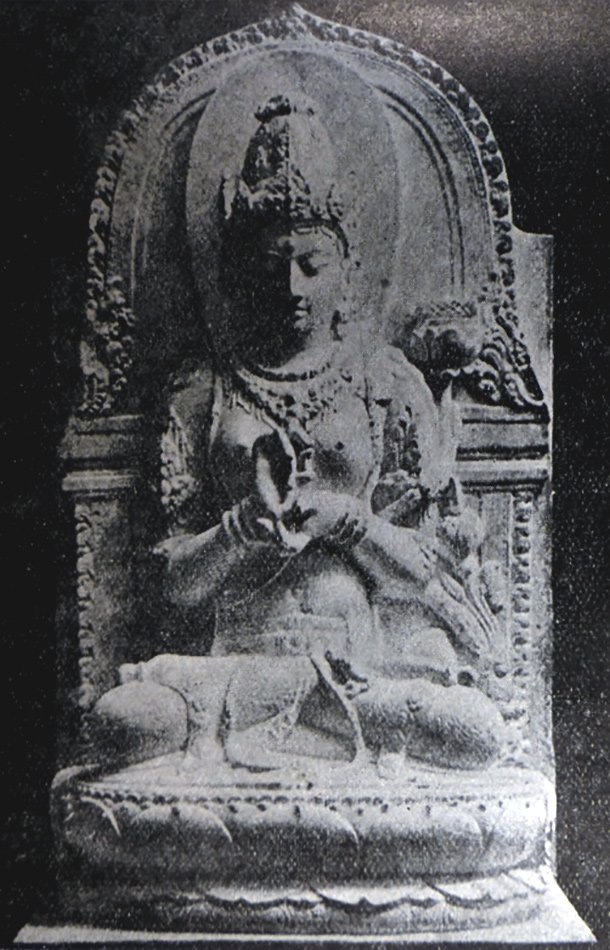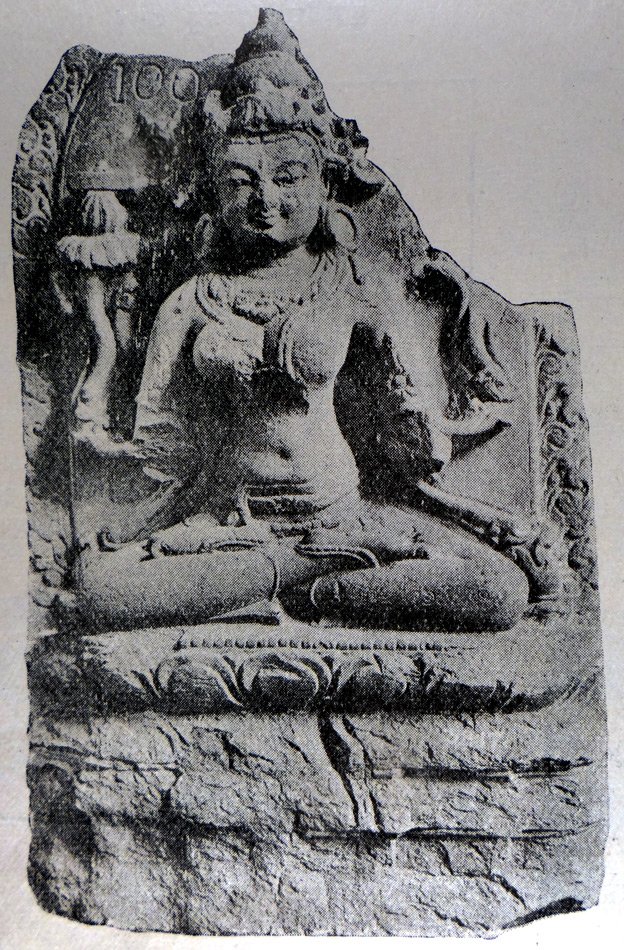The Indian Buddhist Iconography
by Benoytosh Bhattachacharyya | 1958 | 51,392 words | ISBN-10: 8173053138 | ISBN-13: 9788173053139
This page contains an iconography image of Emanations of Akshobhya: Prajnaparamita and represents figure 141-142 of the book Indian Buddhist Iconography, based on extracts of the Sadhanamala English translation. These plates and illustrations represent either photographs of sculptures or line-drawing reproductions of paintings or other representations of Buddhist artwork.
Figure 141-142 - Emanations of Akṣobhya: Prajñāpāramitā
 Figure 141: Prajñāpāramitā (Leiden, Holland) |
 Figure 142: Prajñāpāramitā (Indian Museum) |
Prajñāpāramitā is the embodiment of the Mahāyāna Scripture of the same name which was, according to the Buddhist tradition, restored from the nether regions by Nāgārjuna in the second century A. D. Buddha is said to have entrusted this Book of Transcedental Knowledge to the care of the Nāgas in the nether regions, as in his time people were not sufficiently intelligent to grasp the true meaning of the doctrines it contained. The worship of Prajñāpāramitā was very popular among the Buddhists, and Ārya Asaṅga is credited to have composed one of the Sādhanas for her worship which is said to confer wisdom and erudition on her devotees Nine Sādhanas in the Sādhanamālā describe the procedure of her worship, and of these only two are assigned to the kula of the Dhyāni Buddha Akṣobhya. She too, like Mañjuśrī, could not be assigned to any one of the Dhyāni Buddhas because the Prajñāpāramitā scripture was chronologically earlier than the Dhyāni Buddhas. The two Sādhanas describe the white and the yellow forms of the goddess. Images of Prajñāpāramitā are found in Tibet and China.
(i) Sitaprajñāpāramitā:
Colour: white;
Āsana: vajraparyahka;
Symbols: lotus and book;
Only one Sādhana in the Sādhanamālā describes the form of white Prajñāpāramitā with the image of Akṣobhya on the crown. She is two armed, one-faced, sits in the Vajraparyaṅka attitude on a white lotus, and carries the red lotus in the right hand and the Prajñāpāramitā Book in the left. She is decked in all sorts of ornaments, has a beautiful face and pleasant expression, unlike other emanations of Akṣobhya.
(ii) Pitaprajñāpāramitā:
Colour: yellow;
Mudrā: vyākhyāna;
Distinctive mark: book on lotus to the left;
The yellow variety of Prajñāpāramitā with the effigy of Akṣobhya is identical in form with the one described above, except with regard to the colour and the mudrā. She is yellow in complexion, bears the image of Akṣobhya on her Jaṭāmukuṭa, wears celestial ornaments, and her two hands display the Vyākhyāna attitude. On a lotus to her left rests the scripture Prajñāpāramitā. The celebrated image of Prajñāpāramitā (Fig. 141) of Java belongs to this variety, and tallies in all details with the description given in the Dhyāna.
(iii) Kanakaprajñāpāramitā:
Colour: golden;
Mudrā: dharmacakra;
Āsana: vajraparyaṅka
Symbol: book on lotus on two sides.
This form of Prajñāpāramitā is identical in all respects with one of the forms described previously. The difference lies in the fact that although she exhibits the Dharmacakra-mudrā with her two hands, there are two books on two lotuses rising from under her two arm-pits. She is golden in colour. The Java figure of Prajñāpāramitā illustrated previously has only one lotus bearing the book in her left, but the Indian Museum image (Fig. 142) with two lotuses on either side, each bearing a manuscript, may definitely be identified with this variety of Prajñāpāramitā.
